Nelder-Mead optimization method. Python implementation example
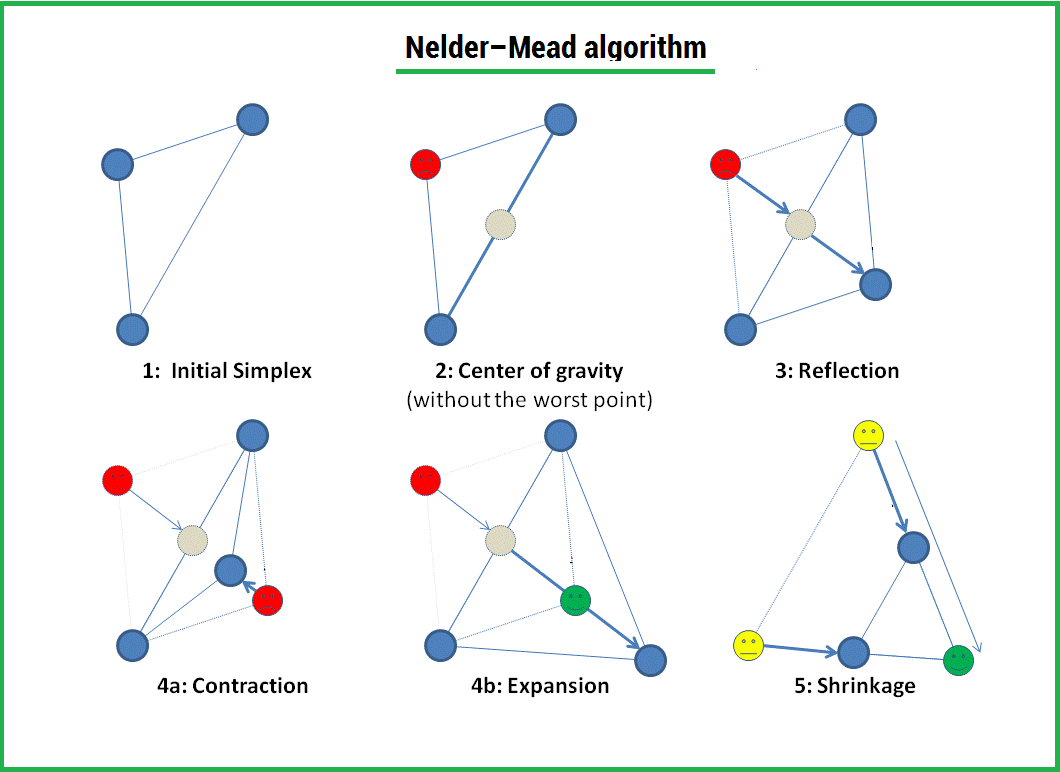
The Nelder-Mead method is a method of optimization (minimum search) of a function of several variables. A simple and at the same time effective method that allows you to optimize functions without using gradients. The method is reliable and, as a rule, shows good results, although there is no theory of convergence. It can be used in the optimize function from the scipy.optimize module of the popular library for the python language, which is used for mathematical calculations.
The algorithm consists in the formation of a simplex ( simplex ) and its subsequent deformation in the direction of the minimum, through three operations:
1) Reflection (reflection);
2) Stretching (expansion);
3) Compression (contract);
A simplex is a geometric figure, which is an n - dimensional generalization of a triangle. For one-dimensional space, this is a segment; for two-dimensional space, it is a triangle. Thus, an n - dimensional simplex has n + 1 vertices.
Algorithm
1) Let
Sort points by function values
We are looking for the minimum of the function, and therefore, at this step, the best point will be that at which the value of the function is minimal. For convenience, we denote the points as follows:
b =
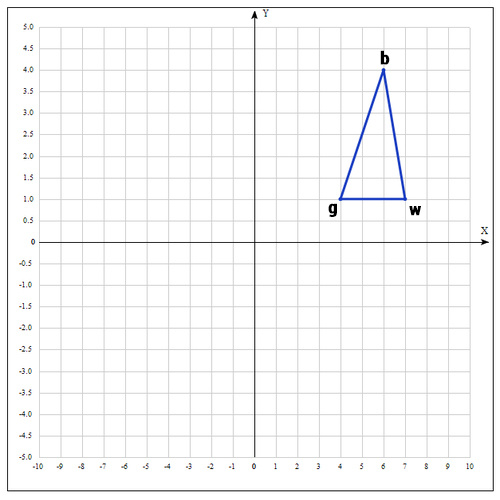
2) At the next step, we find the middle of the segment whose points are g and b. Because the coordinates of the middle of the segment are equal to the half-sum of the coordinates of its ends, we obtain:
In a more general form, you can write this:
3) Apply the reflection operation:
Find the point
Those. actually reflect the point w relative to mid. As a rule, they usually take 1. We check our point: if
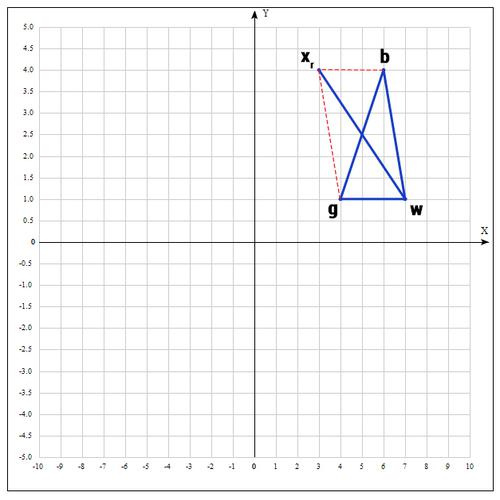
4) Apply the operation of stretching:
Find the point
We take γ = 2 as γ, i.e. the distance is increased by 2 times.
Check point
If
Next, replace the point w with
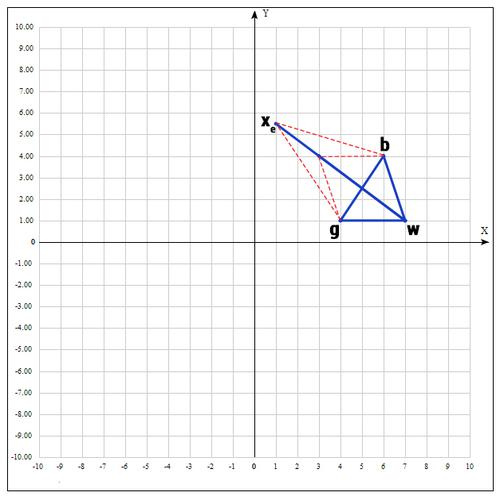
5) If we were not lucky at all and we did not find good points, we try the compression operation.
As the name of the operation implies, we will reduce our segment and look for good points inside the triangle.
Trying to find a good point
The coefficient β is taken equal to 0.5, i.e. point
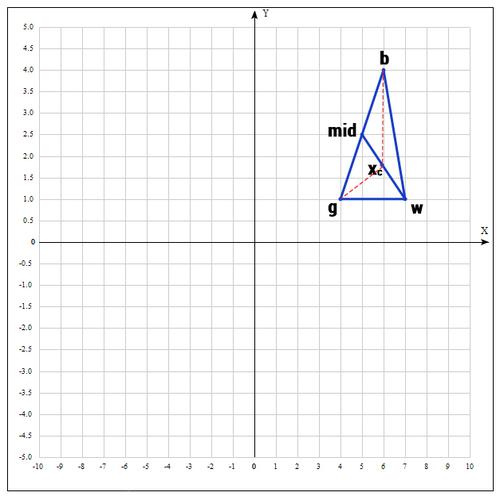
There is another operation - shrink (reduction). In this case, we redefine the whole simplex. We leave only the "best" point, the rest is defined as follows:
The coefficient δ is taken equal to 0.5.
Essentially move the points towards the current “best” point. The conversion is as follows:

It should be noted that this operation is expensive, since it is necessary to replace points in the simplex. Fortunately, it was found during a large number of experiments that shrink transformation rarely happens in practice.
The algorithm ends when:
1) The required number of iterations was performed.
2) The area of the simplex reached a certain value.
3) The current best solution has reached the required accuracy.
As with most heuristic methods, there is no ideal way to select initializing points. As already mentioned, you can take random points located close to each other to form a simplex; but there is a better solution that is used in the implementation of the algorithm in MATHLAB:
First point selection
Where
Example:
Find the extremum of the following function:
As starting points, take:
We calculate the value of the function at each point:
Rename the points as follows:
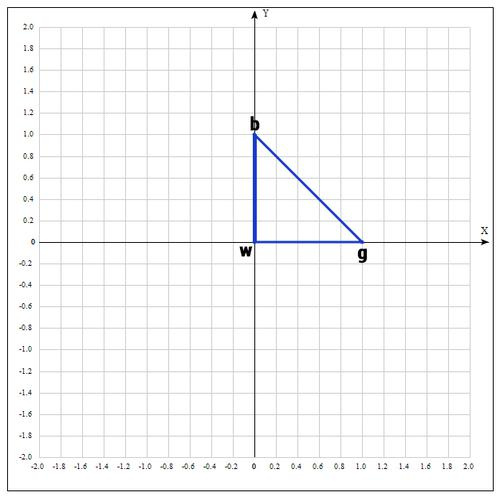
Find the middle of the segment bg:
Find the point
if α = 1, then:
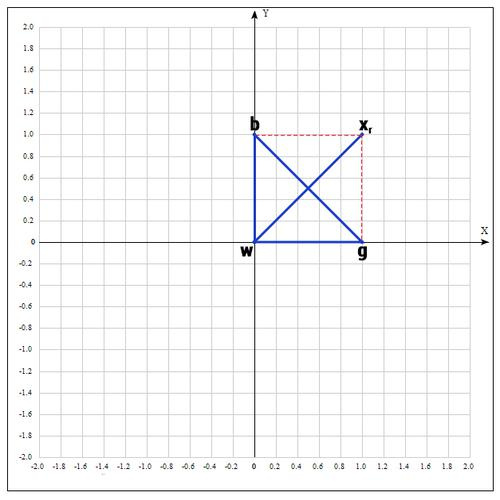
Check point
if γ = 2, then:

Check the value of the function at the point
It turned out that the point
And the algorithm starts over.
Table of values for 10 iterations:
| Best | Good | Worst |
|---|---|---|
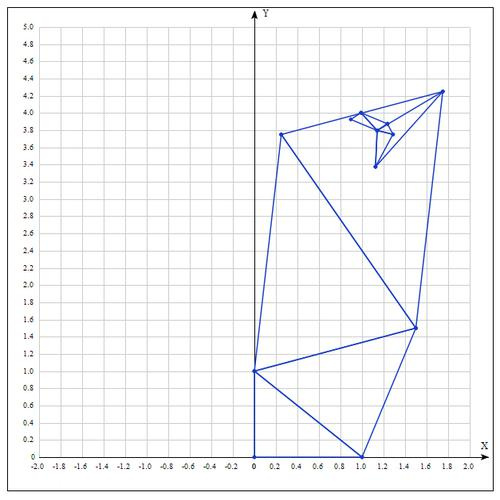
Analytically find the extremum of the function, it is reached at the point
After 10 iterations, we get a fairly accurate approximation:
More about the method:
The Nelder-Mead algorithm is mainly used to select a parameter in machine learning. In essence, the simplex method is used to optimize model parameters. This is due to the fact that this method optimizes the target function rather quickly and efficiently (especially where shrink modification is not used).
On the other hand, due to the lack of a theory of convergence, in practice the method can lead to an incorrect answer even on smooth (continuously differentiable) functions. It is also possible that the working simplex is far from the optimal point, and the algorithm performs a large number of iterations, while changing the function slightly. A heuristic method for solving this problem is to run the algorithm several times and limit the number of iterations.
Implementation in python programming language:
We create the auxiliary class Vector and overload the operators to be able to perform basic operations with vectors. I intentionally did not use auxiliary libraries to implement the algorithm, as in this case, perception is often reduced.
#!/usr/bin/python
# -*- coding: utf-8 -*-
class Vector(object):
def __init__(self, x, y):
""" Create a vector, example: v = Vector(1,2) """
self.x = x
self.y = y
def __repr__(self):
return "({0}, {1})".format(self.x, self.y)
def __add__(self, other):
x = self.x + other.x
y = self.y + other.y
return Vector(x, y)
def __sub__(self, other):
x = self.x - other.x
y = self.y - other.y
return Vector(x, y)
def __rmul__(self, other):
x = self.x * other
y = self.y * other
return Vector(x, y)
def __truediv__(self, other):
x = self.x / other
y = self.y / other
return Vector(x, y)
def c(self):
return (self.x, self.y)
# objective function
def f(point):
x, y = point
return x**2 + x*y + y**2 - 6*x - 9*y
def nelder_mead(alpha=1, beta=0.5, gamma=2, maxiter=10):
# initialization
v1 = Vector(0, 0)
v2 = Vector(1.0, 0)
v3 = Vector(0, 1)
for i in range(maxiter):
adict = {v1:f(v1.c()), v2:f(v2.c()), v3:f(v3.c())}
points = sorted(adict.items(), key=lambda x: x[1])
b = points[0][0]
g = points[1][0]
w = points[2][0]
mid = (g + b)/2
# reflection
xr = mid + alpha * (mid - w)
if f(xr.c()) < f(g.c()):
w = xr
else:
if f(xr.c()) < f(w.c()):
w = xr
c = (w + mid)/2
if f(c.c()) < f(w.c()):
w = c
if f(xr.c()) < f(b.c()):
# expansion
xe = mid + gamma * (xr - mid)
if f(xe.c()) < f(xr.c()):
w = xe
else:
w = xr
if f(xr.c()) > f(g.c()):
# contraction
xc = mid + beta * (w - mid)
if f(xc.c()) < f(w.c()):
w = xc
# update points
v1 = w
v2 = g
v3 = b
return b
print("Result of Nelder-Mead algorithm: ")
xk = nelder_mead()
print("Best poits is: %s"%(xk))
Thanks for reading the article. I hope she was useful to you and you learned a lot.
FUNNYDMAN was with you. Good optimization!)
